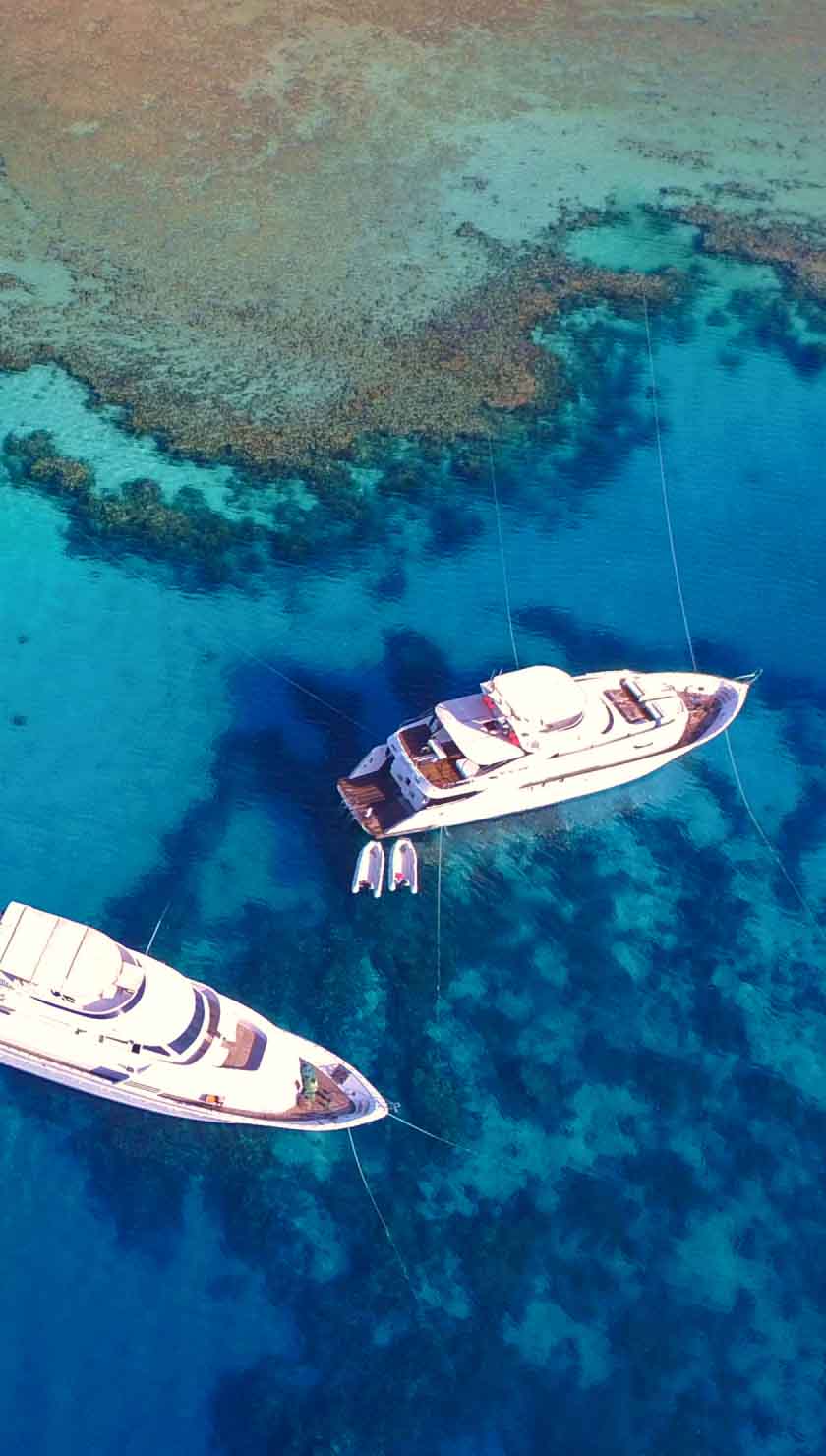Sailing in Mexico, most trips depart from two different cities, either Cabo San Lucas or San Jose del Cabo, both located in the south of Baja California. Most of the dive cruises depart at night, around 9 pm as it will take some time to get to the Socorro islands, located 400 km from the Mexican mainland. Some do leave in the morning, so please check this thoroughly. Once you arrive at the first destination you will first do a check dive with the staff, so that they get to know you as a diver and also to get you into the ‘groove’ of things. These dives will also help the captain and staff choose the most suitable dive sites for the trip. Depending on the weather and itinerary, divers aboard a Mexico dive liveaboard can expect to do 3 to 4 dives per day, except for departure and return days.
All itineraries are subject to change depending on the divers and the weather; it will always be the Captain's final choice, and safety is always the main priority.
Dive Sites And Areas In Mexico
SOCORRO: This spectacular area has four islands to keep divers entertained, a group of four volcanic islands called the Revillagigedo Archipelago, otherwise known as the Socorro Islands. This is a paradise for many large species of Pelagic species, including many species of sharks, Humpback whales, and dolphins, and they are also known for the many large Manta Rays. The visibility in this area varies from 15-50m (49-164ft), and water temperatures range from 21 degrees Celsius (70 degrees Fahrenheit) up to 28 degrees Celsius (82 degrees Fahrenheit). They are part of a protected biosphere reserve, and many conservation organizations are working around here to preserve the unique wildlife that inhabits and passes here.
SEA OF CORTEZ: The Sea of Cortez has many different dive sites and also provides divers with incredible marine wildlife encounters. One of the dive areas, La Paz, is best known for the extremely large schools of Hammerheads, which roam here during winter and autumn. Another dive area, Cabo Pulmo, is one of the few coral reefs in this area; a colorful and thriving reef that inhabits more than 6000 marine species, with generally great visibility this is the spot for some colorful underwater photography.
When To Go
Mexico is an all-year-round diving destination but the best times to go depends on the marine wildlife and their presence at the dive sites. Socorro has the calmest seas from November to May, with the waters being around 28 degrees Celsius (82 degrees Fahrenheit) in November, 21 degrees Celsius (69 degrees Fahrenheit) in February, and back up to 25 degrees Celsius (68 degrees Fahrenheit) in May. These winter months also bring the primary spectacles: thousands of humpback whales that come here to breed and many manta rays. The visibility here depends solely on the plankton in the water which depends on the moon, but in general, the visibility is excellent.
The best months to dive in Guadalupe are August to October, with the best visibility to see the many rowdy male sharks around during this time. Still, the waters here are colder, about 20 degrees, so a wetsuit is important. If Hammerheads is what you hope to see, then September and October are the best months to go.
NOTE: In January 2023, the Mexican government banned Great White Shark-Related Tourism on Guadalupe Island to protect and preserve the delicate marine ecosystem and the endangered Great White Shark population. By limiting tourism activities in the region, the authorities aim to reduce disturbances to the sharks' natural behaviors and habitats, ensuring their long-term survival and promoting sustainable eco-tourism practices.
Tips For Travellers
Each liveaboard has its minimum dive experience level. Most expect to have your Advanced Open Water with at least 50 logged dives, but a few only need you to have your Open Water and no minimum logged dives. Please always check this before booking, and it is essential to remember your dive logs/logbooks.
The primary language is Spanish; however, English is widely spoken all around the country and on the liveaboards. The currency is the Mexican Peso, and you can easily exchange all popular currencies such as US dollars and Euros etc.
The plug is the same as the US: two flat prongs with the standard voltage being 127V. Please remember to bring an adaptor for all your electrics if you are not coming from the US.
How To Get There
There are two ports from which the liveaboards depart: Cabo San Lucas and San Jose del Cabo. These are both cities in Baja California and located in the most Southern municipality, Los Cabos. You will most likely fly into Los Cabos International Airport, which has flights from the United States, Canada, and other Mexican Cities. Both cities have their ports from which the liveaboards will depart.
Considerations
It is important to note that there are potentially extra costs for these trips, such as port taxes, marine park fees, crew gratuities, dive equipment rental (if you do not have your own), and Nitrox. Each liveaboard differs, so please check this before booking. It is important to know that you will require insurance for your trip.
To get into Mexico, you must have a passport valid for at least six more months after arrival and a return flight. The large majority of nationalities can receive a tourist visa on arrival.
Please see your doctor to know which vaccinations might be needed before traveling.
A hotspot for diving with a variety of large marine life, liveaboards in Mexico have so much to offer. The protected reserve around the volcanic islands brings sharks, mantas, dolphins and even humpback whales. You can even cage dive with Great White Sharks at Guadalupe.











